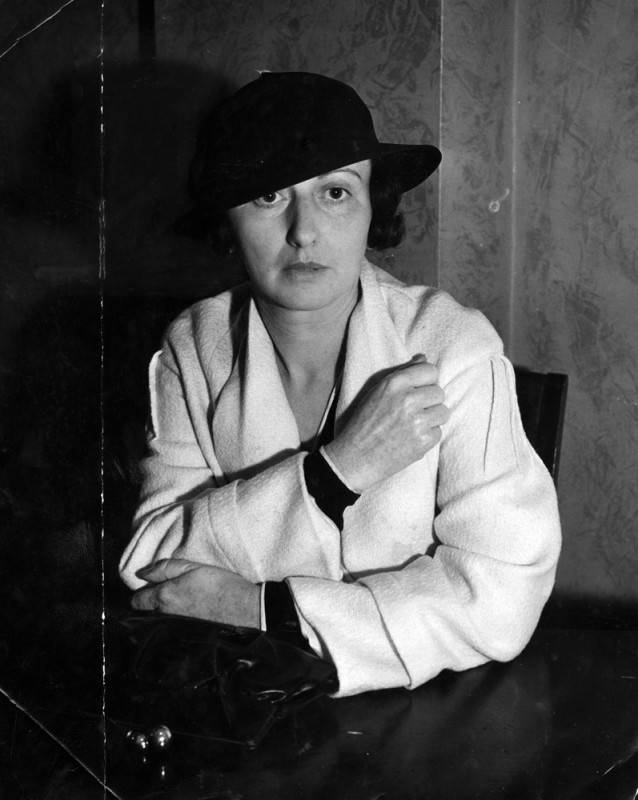
This is the second of a series on California’s unique women’s prison, which has bestirred national interest among sociologists and penologists. An International News Service staff correspondent was able to obtain the first comprehensive “inside story” of the institution where Clara Phillips and other noted women offenders are now confined.

Tehachapi, Cal., May 1, 1935 — Eight months in the “death house!”
Eight months in which to sit in one tiny room, forbidden to talk to anyone except matrons–Eight months in which to remember–what?
Possibly the sound of six shots, ringing out in the still of night–six shots which ended the life of Eric B. Madison, movie studio cashier.
Eight months in which to hear over and over again, the voice of a judge saying “You are sentenced to hang by the neck until dead”.

That is the fate of Nellie B. Madison, comely widow, who is the only woman in California now under sentence to die on the gallows.

Just eight months ago last March 12, Nellie Madison entered Tehachapi prison and was placed in the “death cell.”
This “cell” is merely a room in the prison hospital. Architects who designed the state institution for woman at Tehachapi omitted “death cell.” That’s another way this prison is different.
So, in this room on the second floor of the administration building, Nellie Madison sits day after day. She seems a quite different person from the Nellie Madison who amazed Los Angeles court attaches during her trial with her cool, calm demeanor.
Her nattily tailored clothes are, of course, discarded for the regulation prison costume–blue denim dresses with a white pinstripe.
Her jet-black hair, now greying, has grown from the trim modern bob until it almost reaches her shoulders.
“In Los Angeles, I was thoroughly benumbed by all that had happened,” she said after the first glad welcome of seeing someone whom she had seen in the outside world.
“I couldn’t realize just what had happened to me, but now that I have been here–let’s see is it only eight months or is it ten years–well, I’ve begun to get all the confidence in the world that the State Supreme court will reverse my conviction.”
This was Mrs. Madison’s only interview since she has entered the state institution.
“It seems to me that one’s conscience would be the greatest punishment in the world,” she said.
“My conscience doesn’t bother me one bit, but I do feel the disgrace that I have brought on myself and my family. One’s past good name and character seem to mean nothing when a person gets into trouble, but it apparently doesn’t mean a thing.”
Mrs. Madison’s recreation consists of short walks on the grounds each day–in company with a matron and the letters she receives from friends.”
Aggie became interested in Nellie’s case when she covered it for the Herald. As she learned more about the abuse Nellie suffered at the hands of her husband, Eric, the less she believed Nellie deserved to hang. Through her coverage of the case, and her advocacy, Aggie and others were successful in getting Nellie’s sentence commuted to life; which made her eligible for parole. On March 27, 1943, nine years and three days after the murder, the state released Nellie.
In her 1949 autobiography, Newspaperwoman, Aggie said this about the case.
“While one’s work as a reporter may serve justice and work for or against a defendant, one shies from taking bows for presumed triumphs. Even in commendation, one does not want to feel one’s fairness impugned. I was embarrassed, therefore, when Nellie Madison embraced me gratefully at Tehachapi when I informed her that her sentence to be hanged had been commuted to life imprisonment by Governor Frank F. Merriam.”
“‘You did it! You did it!’ she wept. ‘I owe it all to you!’”
NEXT TIME: In the third article, Aggie tells of interviews with other inmates at Tehachapi.

